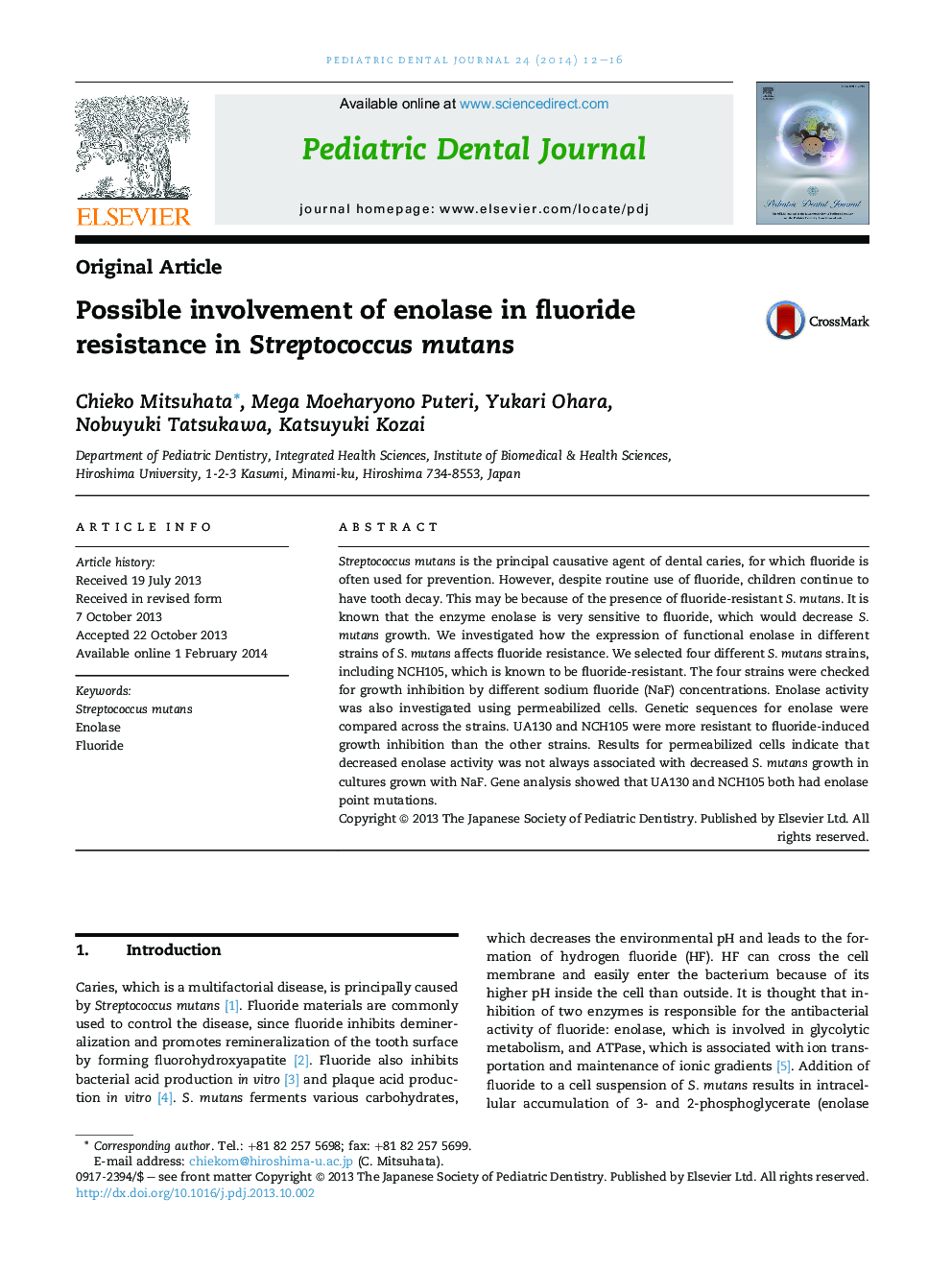| Article ID | Journal | Published Year | Pages | File Type |
|---|---|---|---|---|
| 3171499 | Pediatric Dental Journal | 2014 | 5 Pages |
Streptococcus mutans is the principal causative agent of dental caries, for which fluoride is often used for prevention. However, despite routine use of fluoride, children continue to have tooth decay. This may be because of the presence of fluoride-resistant S. mutans. It is known that the enzyme enolase is very sensitive to fluoride, which would decrease S. mutans growth. We investigated how the expression of functional enolase in different strains of S. mutans affects fluoride resistance. We selected four different S. mutans strains, including NCH105, which is known to be fluoride-resistant. The four strains were checked for growth inhibition by different sodium fluoride (NaF) concentrations. Enolase activity was also investigated using permeabilized cells. Genetic sequences for enolase were compared across the strains. UA130 and NCH105 were more resistant to fluoride-induced growth inhibition than the other strains. Results for permeabilized cells indicate that decreased enolase activity was not always associated with decreased S. mutans growth in cultures grown with NaF. Gene analysis showed that UA130 and NCH105 both had enolase point mutations.
